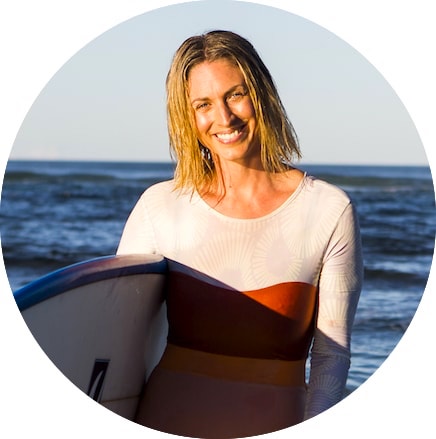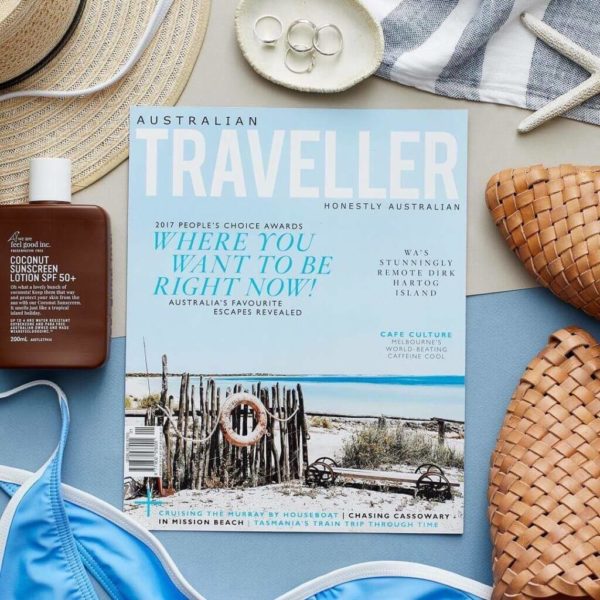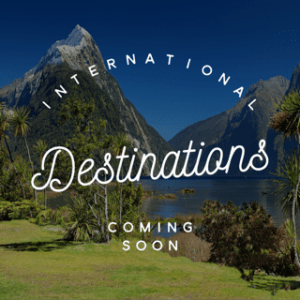As a kid back in the UK, I was involved in competitive sailing, and was lucky enough to sail with two times Olympian gold medalist Sarah Ayton. We competed around the country and I was lucky enough to sail in parts of Europe and beyond. But as time went on, she went on to train and win the Olympics – and well – I didn’t. Subsequently, I took a long break from sailing (a break that I regret to this day). But then….
Almost twenty years later and with ego aside, I stepped onto a yacht in Tasmania that a friend of mine had chartered. I took the helm and knew that I couldn’t live without sailing in my life any longer. The next week I joined a crew in Southport and started to take part in the offshore series. I went and bought myself a 15ft skiff to compete in, and haven’t looked back since. Sailing has once again become a passion of mine, and one that I intend to hold onto very tightly this time.
Whilst in Hobart the skipper of the boat we were sailing asked if I might be interested in taking part in the Sydney to Hobart (S2H). At first, I thought it was madness, and the thought of the race both terrified and excited me. But I was keen to make a big come back to sailing, and so it seemed like there couldn’t be any better way. So, I asked a couple of experienced sailing friends what they thought, and their answer was that I should 100% do it. Some people thought I was mad – but honestly – that’s never stopped me from doing anything before (and neither should it you).
I won’t pretend I didn’t lose sleep at first – worrying about the obvious risks of this kind of race (with a young daughter it weighs on your mind more I guess), and the lack of sleep I would need to deal with (I love my sleep). I weighed up the risks and realised that this was the right thing to do on so many levels. I want to show my daughter that she too can also achieve anything at any age, and that she should never give up on her dreams. As cliché as that sounds, I really believe that with commitment and determination you can do whatever you set your mind to. She’s watched me follow my sailing dreams this past year, and has been my biggest supporter.
The boat I was going to crew on was as comfortable as it can possibly be in such a race. A classic and luxurious boat to say the least that stands well in heavy winds.
The Skipper of Magic Miles (the boat I would be sailing on) explained a bit more about our boat and the race;
“This is a very special race. The 75th year of one of the toughest offshore races on the international calendar, and the fourth Sydney to Hobart for Magic Miles. She is not a stripped-down race-boat. It is slightly more comfortable than most and very solid. Having said that, every Sydney to Hobart has its challenges and we naturally hold the safety of crew and vessel sacred. We are a very collegiate boat, always discussing what is best as a group – we are there to finish safely and enjoy a very special experience with a good team. Being a good team player is a vital prerequisite. It’s an exciting year to be taking part.”
I was on board with people who had taken part in several S2H races. One guy was doing his 28th race and had taken part in the tragic 98 race where 5 boats sank, 66 boats retired, 6 sailors sadly lost their lives, and 55 were taken off their yachts, mostly by helicopter.
For someone that had done very little offshore sailing, I knew it was going to be an adventure I would never forget.
Pictured below: sailing the Formula 15 skiff and Hamilton Island Race Week. Getting back into sailing after nearly 20 years.
The atmosphere on Boxing Day was surreal. Hundreds of spectators enjoyed the buzz at Cruising Yacht Club Australia in Rushcutters Bay, Sydney, as the sailors were busy doing final preparations and briefings. When we left the dock we were waved and cheered as all the boats headed into the harbour with maxi-yachts screaming past in all their glory. Such an amazing vibe and it was hard to stop smiling – in fact I didn’t for the entire race.
The start was pretty hectic. Spectator boats lined the racecourse and we were tacking regularly upwind in the passage towards open sea – everyone getting into the groove of their roles and excitedly anticipating what was to come.
We rounded the first mark and set the spinnaker for a dream downwind run (almost the whole way down the East coast). I went straight into my role of trimming the huge spinnaker. The first day and night saw some fresh winds and we hit 18.9 knots at one point – pretty fast for a 34-tonne boat.
We were straight into our two watch groups with 4 hours on and 4 hours off during the day, and 3-hour rotations at night. As soon as our watch ended and we were relieved of our duties I went straight to bed – a quick visit to the toilet – and then I lay down on my bunk (usually still in my gear or thermals). I was lucky in that I was able to fall asleep quickly. In fact, I probably got more sleep in a day than I normally do. It meant that I didn’t suffer too much from sleep deprivation which was a bit of a concern I’d had pre-race. I think adrenaline kicks in at night and keeps you going. I actually really enjoyed the sleeping – it was like being rocked to sleep like a baby. The only time sleep was a challenge, was when we were in rougher seas. But it did provide amusement as we flew off the bed in the cabin at the bow. We held on tight and got a few winks of sleep.
We were at sea for 4 days. The first day and early part of the night saw some good winds. The following 3 days brought fair-weather sailing ranging from light to moderate, with some fun and non-threatening swell. They were welcoming conditions considering the concerns I’d built up in my mind about the Bass Strait.
We saw wildlife in abundance during the race. Huge Albatross flew by daily, and on the third day, we were treated to a spectacle of hundreds of dolphins and seals leaping out of the ocean, a pod of whales, and birds everywhere (all at the same time). They were with us for a good hour and I’ve never experienced a sight like it. I was also introduced to the Sunfish. What an unusual creature the sunfish is – (easily mistaken for a shark from above the water but weird as hell from under).
There were a couple of moments in the race where I thought that it might be taking a turn for the worst.
On the first night, the breeze picked up to the point that we needed to drop the spinnaker we had set. We had an interesting moment as the spinnaker dropped, and unfortunately, the guy holding the halliard got the brunt of it – loosing the skin on both hands and suffering severe burns. We sterilized his hands and dressed them as well as possible. Sadly, he was unable to sail for the rest of the race. As an experienced sailor who regretfully made a mistake by not wearing his gloves in that moment, he was still able to be a huge tactical support for the race and he kept his morale throughout. Note to self – always wear gloves.
On another night a message was relayed that one of the boats was uncontactable. We happened to know this particular boat and were obviously concerned for their safety. About an hour later we heard that a PLB (Personal Locator Beacon) from that particular boat had been activated. It was not a good sequence of events and indicated that something was not right. As we were only 6 nautical miles away from the PLB’s position, we began a crew search, looking out for flares, torches, and any signs of something suspicious in the water. Marine rescue was activated – and fortunately – after a while – we were informed that the PLB had been accidentally activated and that the boat was safe and sound. A huge relief for everyone. But it was definitely something I had been dreading, and for a while there I thought that maybe we were sailing into a bit of a nightmare situation.
There were long periods where there were very few boats in sight, and then towards the end our decision to stay closer to shore paid off. Wind was light at this point and it was fun to trim and tune the boat continuously to see how we could gain and maintain our position in the fleet. We attacked the competitive side with a very laid back attitude (which was a challenge for me as I’m highly competitive when it comes to sailing).
For much of the race we were 5th in our division, and 2nd at one point. At the very end of the race when we started our sail up the notoriously frustrating Derwent, we started to gain on some of the boats that had been becalmed. But then every breath of wind vanished before us. We too were stuck in the doldrums. At one point we were actually going backwards and in circles. The current was stronger than the wind and some boats even dropped anchor. It was comical and frustrating at the same time. What should have taken us an hour ended up taking 6! Never has a beer felt so close yet so far. We dropped to 10th and ended up goose winging the asymmetric spinnaker through the finish line. Never done that before! But I’ve also never gone backwards in a race.
It was an emotional finish. Whilst trimming the spinnaker I turned to the skipper to thank him and I could see he had teared up along with a couple of others. My tears followed immediately and we had a big group hug. After looking forward to the race for so long – it just felt incredible to have completed it.
We switched on the motor and did a circuit of Constitution Dock. The Taste of Tassie festival was on and the dock was lined with people waving, clapping, and handing us beers. And then I spotted my family and little girl who was jumping up and down and waving. She ran excitedly along the jetty waving her arms, and followed the boat as we made our way to dock. What a moment – and just when I thought it couldn’t get any better.
After beers on board with the crew and reuniting with loved ones, we headed to the infamous Customs House – full to the brim with sailors. I even bumped into professional sailor Rob Greenhalgh from Ichi Ban who I used to train with back in the UK when I was younger. So good to see the pro’s mixing with us amateurs (haha) and enjoying the sociable part of the regatta.
Yeah I would. Without a doubt, I will be back to do another Sydney to Hobart. And if you ever get the chance to do it – then I’d highly recommend it. Just make sure you take the safety aspects of the race very seriously.
Taking on any big challenge involves an element of preparation, and the Sydney to Hobart is no exception. In fact, after the tragic events of the 1998 race, there are more and more conditions of entry to protect the safety of participating crews.
There were several things I needed to do in order to be eligible to race, and several things that were wise for me to take part in.
Some of these involved clocking up the nautical miles, taking part in an offshore racing series, participating in some ‘big boat’ race events, getting fit (mentally and physically – not sure which is hardest), and completing the Australian Sailing Safety & Sea Survival course for Category 1 offshore racing. This particular course was introduced as a result of the 1998 Sydney to Hobart events, and is something that at least 50% of the crew must have completed in order to qualify for the race. For me, it was an absolute no brainer that I would do the course.
The two-day course with the Pacific Sailing School was held in Sydney at the Cruising Yacht Club of Australia. What a stunning venue for a course like this.
From learning about what can go wrong and how to mitigate against it, to experiencing the practicalities of using life rafts, safety equipment, and flares – we covered so much. The practical sessions meant that there was a great balance between theory and actually trying out many of the techniques of survival first hand. The pool workshops were fun but definitely demonstrated how serious things can get in such a short space of time; an important eye-opener to say the least.
Doing this course gives you the opportunity to actually get to grips with some of the methods that may well save your life one day, and you’d be surprised how easily and quickly things can go wrong, even for the most skillful of sailors. But most importantly, coming away from the course I felt far more confident about how to avoid risk in the first place.
This course is for anyone looking to do offshore sailing, whether it be cruising for leisure or racing in big events like the S2H. On the course with me were world champions, Olympic hopefuls, and people who had spent their whole life sailing, along with others who had only started sailing recently. It demonstrated that you can never know enough about how to stay safe on a boat.
If you want to do a similar course, or are looking at other sailing related courses, then I’d highly recommend the fantastic guys at the Pacific Sailing School. You can find out more here.
You don’t have much room to store things during the race (our boat had more room than most) and you need to make sure things stay dry. You also want to be able to find things easily and quickly when you are going from sleep to your watch. I asked some sailors who had done this a few times what to take and their advice shaped my kit list.
Top of the priority list of course is safety. I was lucky enough to be kitted out with first-class offshore sailing gear from Mustang Survival. From my hard-wearing wet weather gear through to the very fancy PFD that sat comfortably on me the entire race. Wearing this gear gave me real confidence in my safety. I’ve put some links below to the kit that I took.
Keeping warm is another piece of advice I was given time and time again by experienced offshore sailors. I used the incredible merino wool thermals from Le Bent. Oh my word, these thermals are amazing – I literally didn’t take them off. They were the softest and most comfortable thermals I’ve ever worn – and they didn’t even smell after 4 days of wearing them (I’d say that’s a result). If you are looking for quality quick drying thermals, then I wouldn’t look anywhere else. These guys have mastered this market.
Here’s what I took with me:
Doing this race was a big achievement for me. I hadn’t done much offshore big boat sailing before – apart from a few races in the UK as a kid. Most people were fascinated that I was doing the race and were really supportive, but I did receive some less positive comments about the fact that I’d be leaving on Boxing Day (a family time), and people are often surprised about how often I sail (once a week). Honestly, I don’t think any man would get those kinds of comments, but as a mum you are still expected to be the one that never leaves – let alone have a hobby that removes you from the home for one day a week. I’m not sure it would be questioned if it were a man watching a big rugby match or taking part in regular cricket training/test matches. I’m simply not a manicure, handbags or facials kind of a girl – this is how I want to spend my time. This is what does it for me.
Anyway, this last year of sailing has bought me so much happiness. I bring a much happier and healthy person back into the home, and instead of telling my daughter to live her dreams, I’m actually leading by example – I mean how many times in life have we been told to follow our dreams, and how often do we think “yeah right’ when someone says it. It’s more important to show that this cliche statement is actually really valid and totally possible. Yes, I miss my little girl (now 9) when I’m away at the odd weekend regatta, but I live with her 7 days a week. She certainly doesn’t go without me. I hope she learns that she too can do anything, no matter what it is or when she decides to do it in her life. Us mums are allowed to have our own identity and show our kids how to thrive independently. Because let’s face it – that’s exactly what we want our kids to do one day.
So male or female, young or old, inexperienced or experienced – I highly encourage you to go after the things in life that make your heart sing. Because as they say – we only get one shot – so make the most of every day! See you at the start line maybe 🙂
UPDATE: With the help of friends and our amazing Instagram community I managed to raise $2217 for the kids of Rafiki Mwema. Find out more here.
I love staying in cities, but I have to say, I also love to find the quieter pockets to retreat to after a big day of being a fully-fledged ‘tourist’. For the S2H I wanted to be close to Rushcutters Bay and the Cruising Yacht Club of Australia (where the race starts from). But I also wanted to be close enough to walk to all of the major sites like the Opera House, Sydney Harbour Bridge, and so on.
The Vibe Rushcutters Bay overlooks a pretty park that surrounds the stunning yacht-filled marina. Just a few minutes’ walk from the hotel and you are at the water’s edge.
I made the most of the location and took a lovely stroll to the Royal Botanic Gardens via St Mary’s Cathedral and the Art Gallery of NSW. If you walk through the gardens towards the harbour itself, you can follow the path right around to the Opera House. It’s a great way to get to the city. The hotel is also a hop, skip and jump to Pott’s Point – an area that has the highest concentration of art deco high rises in Oceania apparently.
The Vibe Rushcutters Bay is such a great alternative to avoiding the hustle and bustle of crazy city life. The location is fantastic at any time of the year, and I’ll be back to enjoy its epic and beautiful vibe soon.

Welcome along. I’m Clare, Founder of Take Me To Australia. Having moved to Australia six years ago, I made it my mission to learn more about this epic country we now call home. As we travel across the country to unique destinations, we share with fresh eyes the most extraordinary places we are lucky enough to experience. We aim to inspire others to follow in our footsteps, live their absolute best life, explore what Australia has to offer, and even encourage people further afield to make a similar move. We’ve grown a like-minded community of over 120,000 people. Be sure to join them by signing up to receive all the latest inspo, and connecting with us on Instagram and Facebook. See you soon.




Sign up for free tips, advice and inspiration here...
